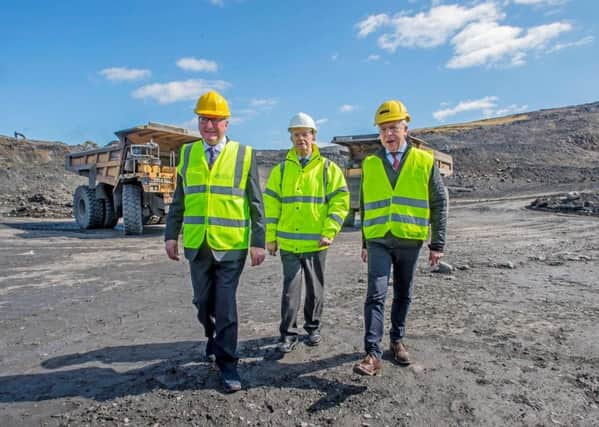The ‘greening’of MainshillQuarry ahead


How will THAT happen?
It was a question Scotland’s rural economy minister Fergus Ewing came to the former Douglas Valley Mainshill opencast mine to find the answer to.
A long-term project to breathe new life into former coal mining sites in the central belt of Scotland will see up to five million trees being planted, opening up new green places and revitalising communities.
Advertisement
Hide AdAdvertisement
Hide AdThe transformation of the sites will be led by new Scottish Government agency Forestry and Land Scotland (FLS), working in partnership with the Scottish Mines Restoration Trust (SMRT), Hargreaves, Hall Construction and local authorities.
As well as benefiting local people and communities, the ambitious project will contribute towards national climate change ambitions.
These include targets for creating new woodlands and planting trees, locking up carbon, improving biodiversity and importantly creating vibrant greenspace for local landscapes blighted by the legacy of opencast mining.
Visiting one of the key sites earmarked for future greening at Mainshill near Douglas, Mr Ewing said: “I want to see more trees being planted across Scotland. This is a prime example of the exciting type of work that Forestry and Land Scotland can deliver for people and communities.
Advertisement
Hide AdAdvertisement
Hide Ad“I want to pay tribute to everyone involved at the Scottish Mines Restoration Trust whose tireless efforts are now coming to fruition.
“By working with the Trust and South Lanarkshire Council, this vacant and derelict site at Mainshill will be restored carefully to an economic use that also benefits climate change. But most importantly, this work will help transform and strengthen communities affected by open cast mining.”
The ‘greening’ of the Douglas Valley opencast sites could end a 40-year local environmental battle.